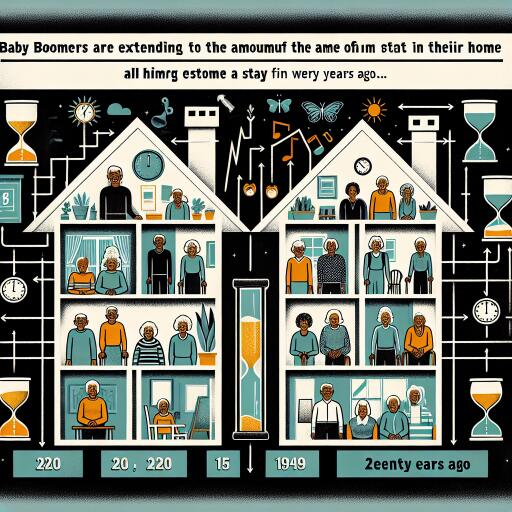Baby Boomers Lead the Charge in Lengthening Homeownership Duration
In a significant shift from past trends, Americans are now remaining in their homes for an average of twice as long as they did just two decades ago. This change is primarily attributed to baby boomers, who are opting to age in place amidst ongoing challenges in housing affordability.
Recent analyses reveal that the median U.S. homeowner now spends approximately 11.9 years in their residence, a stark increase from the median tenure of 6.5 years recorded in 2005. This development is notably influenced by baby boomers, who are choosing to stay in their homes as both mortgage rates and home prices sustain at high levels.
An estimated 40% of baby boomers, who are homeowners, have not moved for 20 years or more. This contrasts with Gen X homeowners, among whom only 35% have remained in their homes for a decade or more. In comparison, millennials and Gen Z homeowners are found to be more transient, largely due to their younger ages and more frequent job changes. Less than 10% of millennials and almost no Gen Z homeowners have lived in the same home for over ten years.
Additionally, the trend of baby boomers aging in place means they are occupying larger homes that are otherwise sought after by millennials. A previous report highlighted that in 2022, baby boomers accounted for 28% of homeownership in the U.S. for houses with three or more bedrooms, which is double the share owned by millennials with families.
One significant reason for this trend is the financial benefit boomers derive from owning their homes outright. More than half (54%) of baby boomers who own homes do so without any mortgage obligations, thereby reducing their housing costs substantially. In contrast, mortgage rates, though they have seen some reduction, remain high, discouraging current homeowners from selling. This scenario is exacerbated by many homeowners clinging to the historically low interest rates at which they initially financed their homes, thus reducing the incentive to move.
The scarcity in housing inventory has further escalated home prices, making the market increasingly unaffordable and compelling individuals to stay put longer. As of December, the median U.S. home price stood just over $402,000, with the median monthly mortgage payment hovering around $2,607. On the flip side, boomers who have cleared their mortgage debts face an average of $600 a month in housing costs, significantly less than their mortgaged counterparts.
Looking ahead, the landscape of homeownership tenure is expected to either remain stable or increase marginally. The sale of existing homes has dipped to a 15-year low, influenced by homeowners’ desire to hold onto low mortgage rates. Although a modest uptick in home sales is anticipated for this year, it is unlikely to result in a substantial boost to the housing market inventory.
As the dynamics of homeownership continue to evolve, the influence of aging baby boomers on the housing market underscores the complex interplay between generational preferences, financial incentives, and market conditions. This trend highlights the need for strategic adjustments in addressing the housing preferences and affordability challenges faced by both older and younger generations alike.
